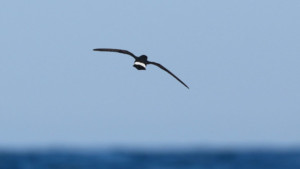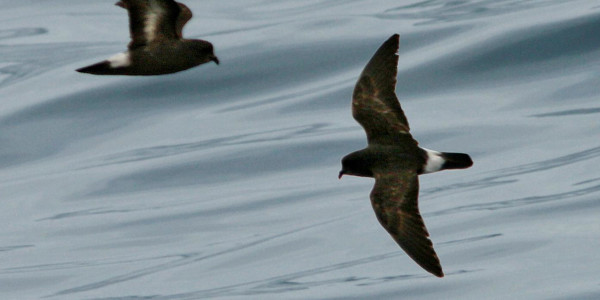LINKED PAPER
Foraging far from home: GPS-tracking of Mediterranean Storm Petrels Hydrobates pelagicus melitensis reveals long-distance foraging movements. Rotger, A., Sola, A., Tavecchia, G. & Sanz-Aguilar, A. 2020. Ardeola. DOI: 10.13157/arla.68.1.2021.ra1. VIEW
Knowledge of the foraging areas of seabirds is essential for planning conservation measures and designing protected areas for these species. However, for the smallest seabirds, foraging areas remain unknown. This is the case of the smallest European seabird; the European Storm Petrel (Hydrobates pelagicus). Individuals of the species only weigh 28 grams, and like other seabirds spend most of their lives at sea, visiting their colonies only during the breeding season. Storm Petrels are long lived, reaching more than 30 years old, form stable pairs and show high nest fidelity. They lay one egg which is incubated for 40 days by both parents, that share parental duties. Storm petrels breed in colonies, typically located in small islands free of mammalian predators. The species is listed as Least Concern by IUCN, but the Mediterranean subspecies (H. p. melitensis) has much lower breeding numbers and a more restricted distribution than its Atlantic relative (H. p. pelagicus), resulting in a higher conservation concern.

Figure 1 Most of the storm-petrels breeding on Benidorm island travel thousands of kilometres away looking for food during the incubation period © Victor Paris
In our recent study in Ardeola: International Journal of Ornithology (Rotger et al. 2020) we used miniaturized GPS devices (~ 0.95 g, Pathtrack Nanofix) to follow the movements and locate foraging areas of the Mediterranean Storm Petrel during the incubation period. We tracked 43 breeding adults during a single trip on the island of Benidorm (in the southwest of the Mediterranean Sea), that holds one of the most important Mediterranean colonies of this species (~600 breeding pairs). The study presents for the first time the characteristics of foraging trips and location of the main foraging areas of Mediterranean Storm Petrels during the incubation period.

Figure 2 Left top panel: Nanofix GPS tag (Pathtrack Ltd) attached to a Mediterranean Storm Petrel using TESA tape. Right top panel: south-western Mediterranean Sea with the main foraging areas (black square). Bottom panel: single foraging trips during the incubation period of 37 Mediterranean Storm Petrels breeding at Benidorm Island (red star). Each colour corresponds to a single individual
All tagged individuals with the GPS device returned to the colony after their foraging trip. However, only 22 tracks were complete because several devices failed to record GPS positions and 2 birds lost their GPS tags. Mean breeding success at the colony was 61% while the mean breeding success of tagged birds was higher, 71%. Individuals showed a high variability in foraging trip duration and distances traveled. Foraging trips lasted between 1 and 4.5 days. Distance traveled within a single foraging trip varied between 303.14 and 1,726.53 km. They covered almost the entire southwest of the Mediterranean Sea, with a home-range area around 135,000 km2. Interestingly, the main foraging area was restricted to the deep waters of the Alboran Sea and the Carategena canyons, with the Alboran Sea being the main foraging area around 8,000 km2 (measured as the 20% of locations of Area of Restricted Search, ARS). These results suggest that Mediterranean Storm Petrels could be foraging at longer distances than their Atlantic counterparts, and even at longer distances than other larger Mediterranean procellariiforms, such as the Scopoli’s Calonectris diomedea or the Balearic Shearwaters Puffinus mauretanicus. Note that the Alboran Sea is a highly productive area in the Mediterranean due to the proximity and entry of cold Atlantic waters and probably storm petrel look for this nutrient rich area despite being located far away from the colony.
The results emphasize the importance of the Alboran Sea for the conservation of the Mediterranean Storm Petrel. Further studies should focus on other life-cycle periods, such as the chick rearing period. Moreover, more research is needed to evaluate if foraging grounds detected here are stable temporally and if are also important for individuals breeding at other important Mediterranean colonies.
References
Rotger, A., Sola, A., Tavecchia, G. & Sanz-Aguilar, A. 2021. Foraging far from home: GPS-tracking of Mediterranean Storm Petrels Hydrobates pelagicus melitensis reveals long-distance foraging movements. Ardeola 68: 3-16. VIEW
Image credit
Featured image: Storm-petrels Hydrobates pelagicus | Richard Crossley | CC BY-SA 3.0




